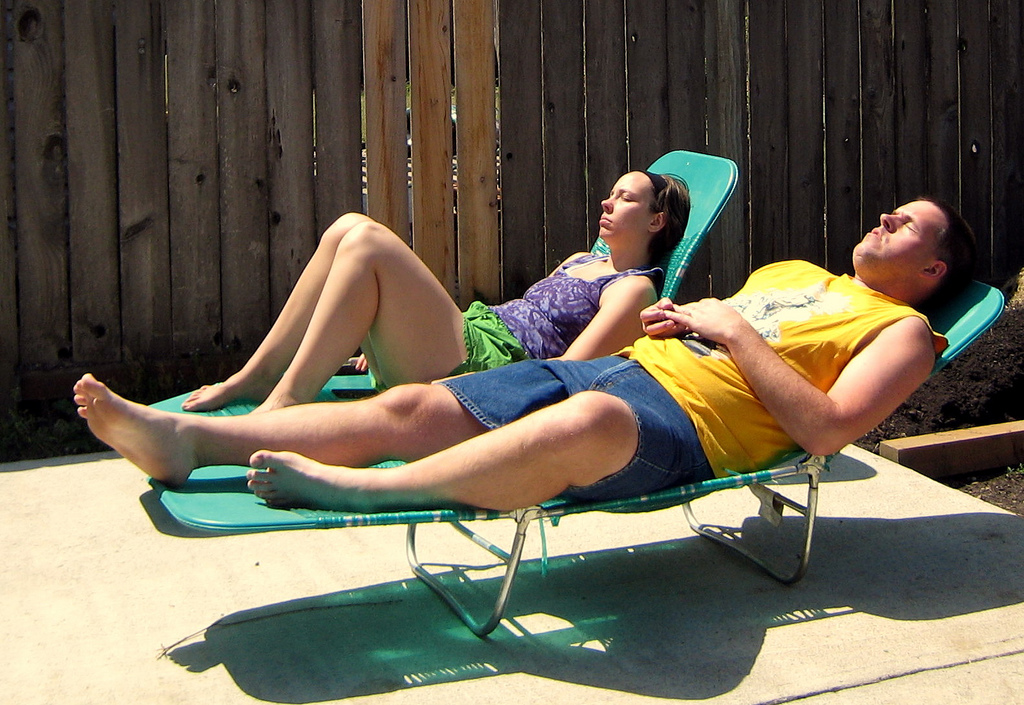Sunlight is healthy for the eyes: Millions of children have compromised eyesight from not getting enough natural light
02/28/2018 / By Michelle Simmons

Prevent the risk of long-term eye damage by getting exposed to natural light. Children who don’t get enough sunlight exposure are at risk of long-term eye damage, an expert warned.
David Allamby, who is an opthalmologist and director of Focus Clinic in London, warned that lack of sunlight increases children’s risk of developing myopia, which can eventually result in blindness. Myopia can also lead to sight-threatening diseases, such as retinal detachment or glaucoma.
Also known as nearsightedness, myopia develops when the eye grows excessively long from front to back. Normally, the lens of the eye focuses the image on the retina, the light-sensitive tissue in the back of the eye, but with myopia the lens focuses the image in front of the retina instead. Individuals with this condition can usually see well enough to read a book or computer screen, but they find it difficult to see objects farther away.
Allamby’s warning comes after the Office for National Statistics (ONS) revealed that children only spend 16 minutes outside their homes every day. The ONS data was based on information gathered from April 2014 to December 2015. In the data gathering, children accomplished time diaries on two days in every week, one on a weekday and the other on a Saturday or Sunday. The data showed that individuals from 14 and 15 years old only spent an average of 10 minutes each day outdoors, which makes this age group the worst offenders. (Related: Spending more time outside as a child linked to protection against nearsightedness.)
“The figures add to a growing catalogue of evidence which clearly demonstrates a rise in short-sightedness linked to too much time indoors,” he said. “Worryingly, children are now simply spending much more time indoors than in previous generations.”
Furthermore, Allamby said that today’s generation has two times more cases of nearsightedness compared to their parents or grandparents’ and high degrees of myopia is a potentially blinding condition. As a result, he advised that parents encourage their children to spend a minimum of 90 minutes outside per day to maintain a healthy eyesight.
According to the National Eye Institute (NEI) of the U.S., approximately 42 percent of Americans aged 12 to 54 are nearsighted, which increased from 25 percent in 1971. Furthermore, a recent review reports that children from urban areas are more than twice as likely to be myopic, in comparison to those from rural areas.
“Action is needed now – children must be encouraged to put down their mobile devices and get outside and play,” he said. “An addiction to mobile phones and lit screen technology among the young indicates that the numbers suffering eye sight problems is only going to get worse.”
This is the first time that the ONS collected such data, so they were not able to compare it to past years. However, a national study in 2016 reported that parents spent almost twice the time outdoors when growing up, in comparison to their children.
Spending more time outdoors may reduce the risk of children of developing nearsightedness, according to the American Academy of Opthalmology (AAO). Studies suggested that natural light may be important for normal eye development in children. One study showed that for every extra hour children spent outdoors each week, their risk of being nearsighted decreased by around two percent. Another study showed that when schoolchildren were required to spend 80 minutes of recess time outdoors each day, fewer of them developed nearsightedness in comparison to children who were not required to spend recess time outdoors. Another study revealed that the rate of eye growth is related to daylight exposure. Researches from Denmark found that the children’s eyes grew normally during the long days of summer, but grew too fast during the short days of winter.
If you’d like to read more news stories and studies on sunlight exposure, you may go to VitaminD.news.
Sources include:
Tagged Under: children, daylight, eye health, eyes, eyesight, Mother Nature, myopia, natural light, nearsightedness, outdoors, sun exposure, sunlight, sunlight exposure, vision


















